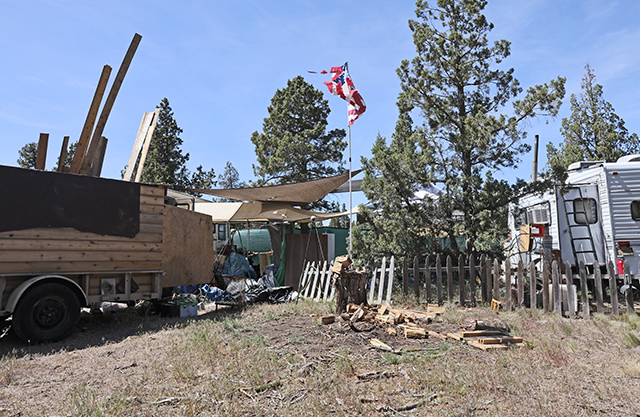Mexican art finds home in Chicago
Published 12:00 am Saturday, January 24, 2015

- Abel Uribe / Chicago TribuneA couple view the art of Mexican Identity in the U.S. section of the National Museum of Mexican Art in Chicago.
CHICAGO — When Carlos Tortolero was starting what is now known as the National Museum of Mexican Art, “there were three things people told me I was crazy for,” he said. “One, doing a museum in a working-class neighborhood; two, starting an arts museum in a working-class neighborhood; and, three, being free. They told me it couldn’t be done.”
Those three alleged insanities have since proved to be strengths, as the museum in Chicago’s Pilsen neighborhood, southwest of the Loop, has grown to become “the largest Latino cultural institution in the country,” according to the message the museum delivers when you call.
Those three elements also define some of the distinct charm of this highly approachable museum, a celebration of the artistic output of Mexicans and Mexican-Americans, from the Mayans to modern-day artists living and working in Oaxaca or Pilsen. Most of the work is painting, but there are ceramics, beadwork, tile, skeleton figurines and other folk art.
A cultural experience
Because it’s in the neighborhood, a visit to the museum is also a visit to, for many people, another culture, and the visitor who doesn’t take advantage of the opportunity is himself perhaps, as people told Tortolero, a little crazy.
While the working-class Pilsen that Tortolero references is still in evidence, the area is changing rapidly. An already vibrant collection of restaurants, shops and, everywhere, wall murals has now been augmented by hipster nightspots, a fancy French bakery and, before their like, oodles of art galleries.
The location in the neighborhood instead of downtown means you can find parking, often free, never approaching the small fortune you have to pay when parking at Chicago’s Museum Campus.
And the museum itself being free means a visit is a low-risk proposition. Even if it turns out you don’t love vibrant, often politically charged art, Aztec figures or kinetic sculptures such as a lawn mower done up like the newest Transformer, you’ve spent nothing but time and, at minimum, learned something new.
Because it doesn’t charge, you can just pop in and check out, for example, the new, wide-ranging permanent collection exhibition, “Nuestros Historias” (Our Stories), with art that ranges from reverent Catholic iconography from earlier centuries to a pink neon sign reading, “MAKE TACOS NOT WAR.” If you do enjoy the place, as most people seem to do, then in good conscience drop what you can afford in the donation box.
But it’s a small enough place that it’s hard not to see the whole thing. There are, essentially, four galleries arranged along a central hallway, plus a terrific gift shop stocked by regular buying trips to the homeland.
Two of the galleries showcase items from the collection, one a current artist and one a temporary exhibition, including the museum’s celebrated annual take on Dia de los Muertos (Day of the Dead).
Founded as the Mexican Fine Arts Center Museum in 1987, it became the National Museum of Mexican Art in 2006. It is located in Harrison Park, tucked between ballfields. Part of its building is an old Park District boat-repair facility, the other part a new structure that opened in 2001.
The building isn’t fancy, but it has a little flair: decorative brickwork along the top edge of the exterior walls, insets into the floors inside. Overhead piping and ductwork are exposed.
Recognizing the diversity of visitors to the museum and that this might be the first museum some people visit, the curators offer lots of explanation of the art. It’s from the wall cards that you learn one contemporary artist, Luis Gonzalez, is known as “Louie the Foot” and that Gunther Gerzso was “Mexico’s greatest abstract painter.”
The “Our Stories” exhibition features art, but the curators, if you take the time to read the cards, also offer lessons in archaeology and ethnography. In the exhibit’s section on “Xicago,” you’ll see art responding to separation from the homeland or to strenuous, manual-labor jobs.
If you’re lucky enough to be at the Museum of Mexican Art when a Day of the Dead show is up, you’ll be awed by the macabre and joyful ways artists interpret the connections between this world and the one populated by spirits, skeletons and devils.
It’s a shame Tortolero himself isn’t part of the museum’s standard experience, chatting up customers and conveying his enthusiasm for this unlikely project. “Why,” he asked, “does everything have to be downtown to be nice?” The National Museum of Mexican Art, responding to the elitism that can infect, especially, art museums, answers that question.






